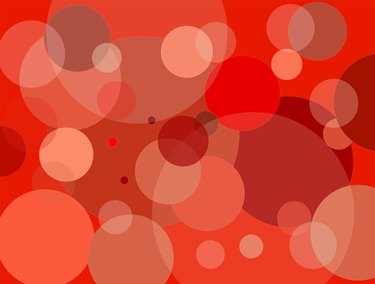
Artists achieve overlapping when they do not include the parts of an object that are hidden from sight by another, closer object. Overlapping techniques add depth to your painting by positioning some objects behind others.
Gestalt Problem
Video of the Day
In the 1920s, a group of psychologists called the Berlin School identified the Gestalt principle: the idea that the human mind completes images even when the image itself is incomplete. Many people have highly developed Gestalt perceptions and find it hard to imagine only the parts of an object that they would see when another object obstructs their view. The result is that beginning artists often draw the distant object completely, causing the closer object to appear transparent.
Video of the Day
Overcoming Gestalt With Observation
Create still-life arrangements for yourself by arranging two or three simple objects so that at least one is behind another. Draw these objects the way they appear from several different angles. Drawing from observation will help you to focus on what you can actually see instead of the part of an object you can only imagine.
Overcoming Gestalt With an Eraser
If you are determined to draw from your imagination and have trouble with overlapping, try starting with a very light sketch. Sketch the object farthest away first. Draw the closer object right on top of it. Erase any parts of the distant object that you can see through the closer object.
Masking
Watercolor artists can apply masking medium to closer objects before painting distant ones. Once the background objects have dried, remove the masking medium. Underneath the mask, the closer objects will be raw paper ready for paint.
Opaque Paint
For oil, acrylic and other opaque paints, paint the background first. Try not to paint over the closer objects; or apply a wash over them if you like. Paint the closest objects last.